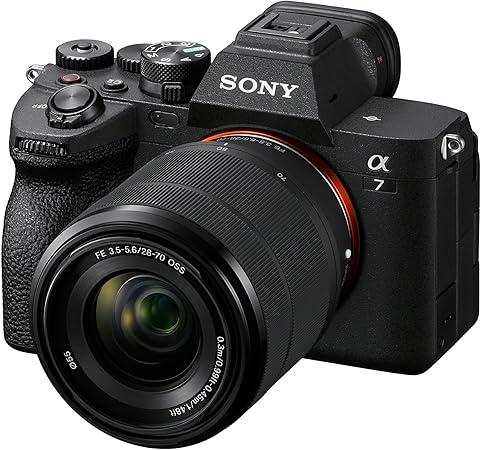The photography world is buzzing with anticipation as the rumored successor to the popular Sony A7 IV, the aptly named Sony A7 V, is now expected to be officially revealed on December 2. While Sony has kept official details under wraps, a flood of leaks from trusted sources like Andrea Pizzini and SonyAlphaRumors has painted a compelling picture of what could be a significant upgrade for hybrid shooters.
At the heart of the new camera appears to be a familiar yet revolutionary component. According to the latest report, Sony will stick with a 33-megapixel resolution but will equip the A7 V with a newly developed, partially stacked CMOS sensor.
This hybrid sensor architecture is the key to unlocking several major improvements. The primary advantage is a dramatically faster readout speed. For photographers, this means the dreaded "rolling shutter" distortion when using the electronic shutter on moving subjects will be significantly reduced, making the e-shutter a viable option for a wider range of action scenes. This speed also reportedly allows the A7 V to shoot at a blistering 30 frames per second with the electronic shutter, a substantial leap from the 10 fps limit of the current A7 IV.
For a visual breakdown of what a partially stacked sensor means for your photography, this video explainer is an excellent resource.
It’s important to note that with the mechanical shutter, the shooting speed is expected to remain at a still-respectable 10 fps. You can read the full, detailed report on the new sensor technology over at SonyAlphaRumors.
Sony A7 V: Elevating the EVF, Video, and Image Stabilization
Beyond the sensor, the A7 V is shaping up to be a powerhouse across the board. In a welcome correction to earlier rumors, it is now believed the camera will be able to record 4K video at 60 fps using the full width of the full-frame sensor. This is a major differentiator from the A7 IV, which employs a significant crop in its 4K/60p mode. Shooting without a crop should result in superior video quality, with better dynamic range and noise performance, directly addressing a key request from videographers.
The camera is also rumored to receive a new, more powerful processor. This will likely fuel faster and more intelligent AI-assisted autofocus, building on Sony's already class-leading subject recognition and tracking.
Furthermore, photographers working in low light will rejoice at the prospect of a more effective in-body image stabilization (IBIS) system. The new IBIS is claimed to offer up to eight stops of shake compensation, potentially allowing for handheld shots at shutter speeds previously unimaginable without a tripod.
On the physical front, the A7 V is expected to feature a familiar but refined body, housing a high-resolution 3.2-inch foldable touchscreen, dual SD card slots, and two USB-C ports for versatile connectivity and power. The electronic viewfinder (EVF) is also slated for an improvement, offering a sharper and more lifelike preview.
With such a substantial list of upgrades, a price increase seems inevitable. The Sony A7 V is anticipated to launch with a price tag of approximately $3,000. For context, you can still find the excellent Sony A7 IV at its launch price of around $2,198 on Amazon.
All eyes are now on December 2, when Sony is expected to move from rumor to reality and officially confirm the features, final pricing, and availability of the highly anticipated Sony A7 V.






Post a Comment